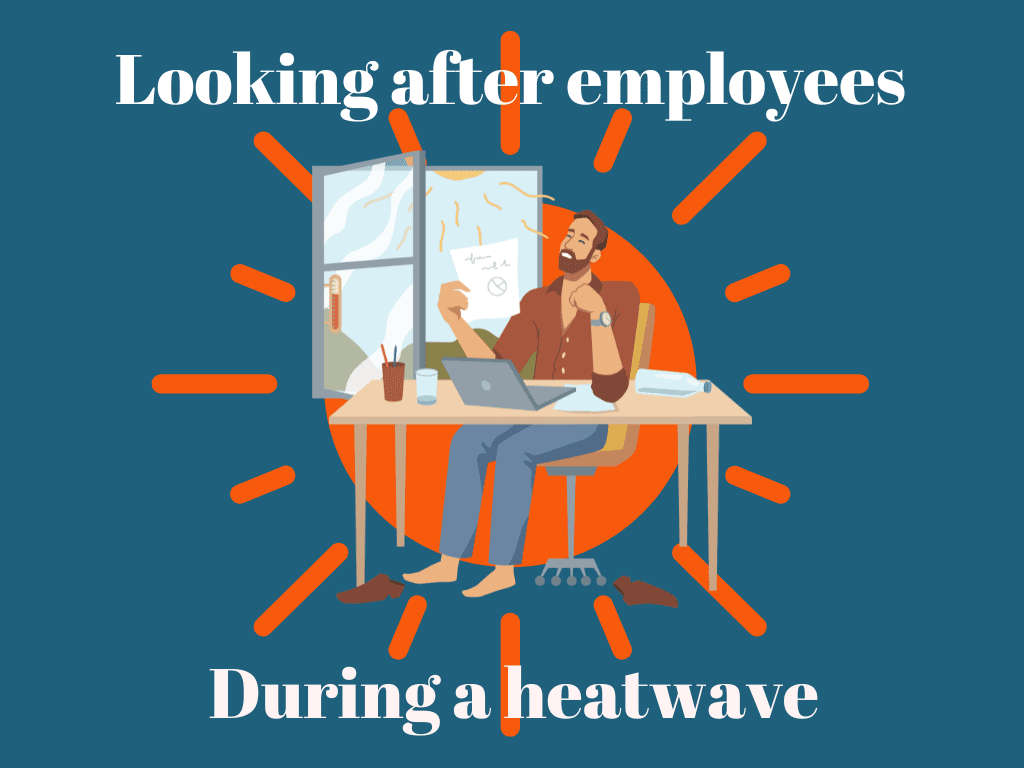Looking after employees during a heatwave

The Met Office have recently released an Amber weather warning for North East England about a hot spell that is likely to develop from Sunday, likely peaking early next week, leading to widespread impacts on people and infrastructure.
Population-wide adverse health effects are likely to be experienced, not limited to those most vulnerable to extreme heat, leading to potential serious illness or danger to life. Government advice is that 999 services should be used in emergencies only; seek advice from 111 if you need non-emergency health advice. There may likely be substantial changes in working practices and changes to daily routines may be required. Significantly more people are likely to visit coastal areas, lakes and rivers leading to increased risk of water safety incidents and delays on roads and road closures are possible, along with delays and cancellations to rail and air travel, with potential for significant welfare issues for those who experience even moderate delays.
In England, there are on average 2000 heat-related deaths every year. So, how can you ensure your employees health is cared for during hot weather?
The HSE outline your responsibilities as an employer, and suggests some ways you can manage the temperature in your workplace for the ‘thermal comfort’ of your employees. Thermal comfort describes a persons state of mind in terms of whether they feel too hot or cold. How you manage the effects of temperature in your workplace depends on whether you and your employees normally work indoors or outdoors and the normal operating temperature of the environment.
Indoor workplaces should provide:
a reasonable working temperature in workrooms – usually at least 16ᵒ C, or 13ᵒ C for strenuous work (unless other laws require other temperatures)
local heating or cooling such as making the best use of fans, radiators and opening windows where a comfortable temperature cannot be maintained throughout each room
thermal clothing and rest facilities where necessary, e.g. for ‘hot work’ or cold stores
heating systems which do not give off dangerous or offensive levels of fumes into the workplace
sufficient space in workrooms
What do I do when my staff are too hot?
You can help ensure thermal comfort in warm conditions by:
providing fans, e.g. desk, pedestal or ceiling-mounted fans
ensuring that windows can be opened
shading employees from direct sunlight with blinds or by using reflective film on windows to reduce the heating effects of the sun
siting workstations away from direct sunlight or other situations or objects that that radiate heat (e.g. plant or machinery)
relaxing formal dress code – but you must ensure that personal protective equipment is provided and used if required
allowing sufficient breaks to enable employees to get cold drinks or cool down
providing additional facilities, eg cold water dispensers (water is preferable to caffeine or carbonated drinks)
introducing formal systems of work to limit exposure, eg flexible working patterns, job rotation, workstation rotation etc.
placing insulating materials around hot plant and pipes
providing air-cooling or air-conditioning plant
To read more about how to take care of your health at home during heatwaves, see The Met Office’s tips.
________
Talbot Jones Ltd is a family-run chartered insurance heritage specialist in the Third Sector and Professional risks. Get in touch for free insurance advice, review or quotation.






